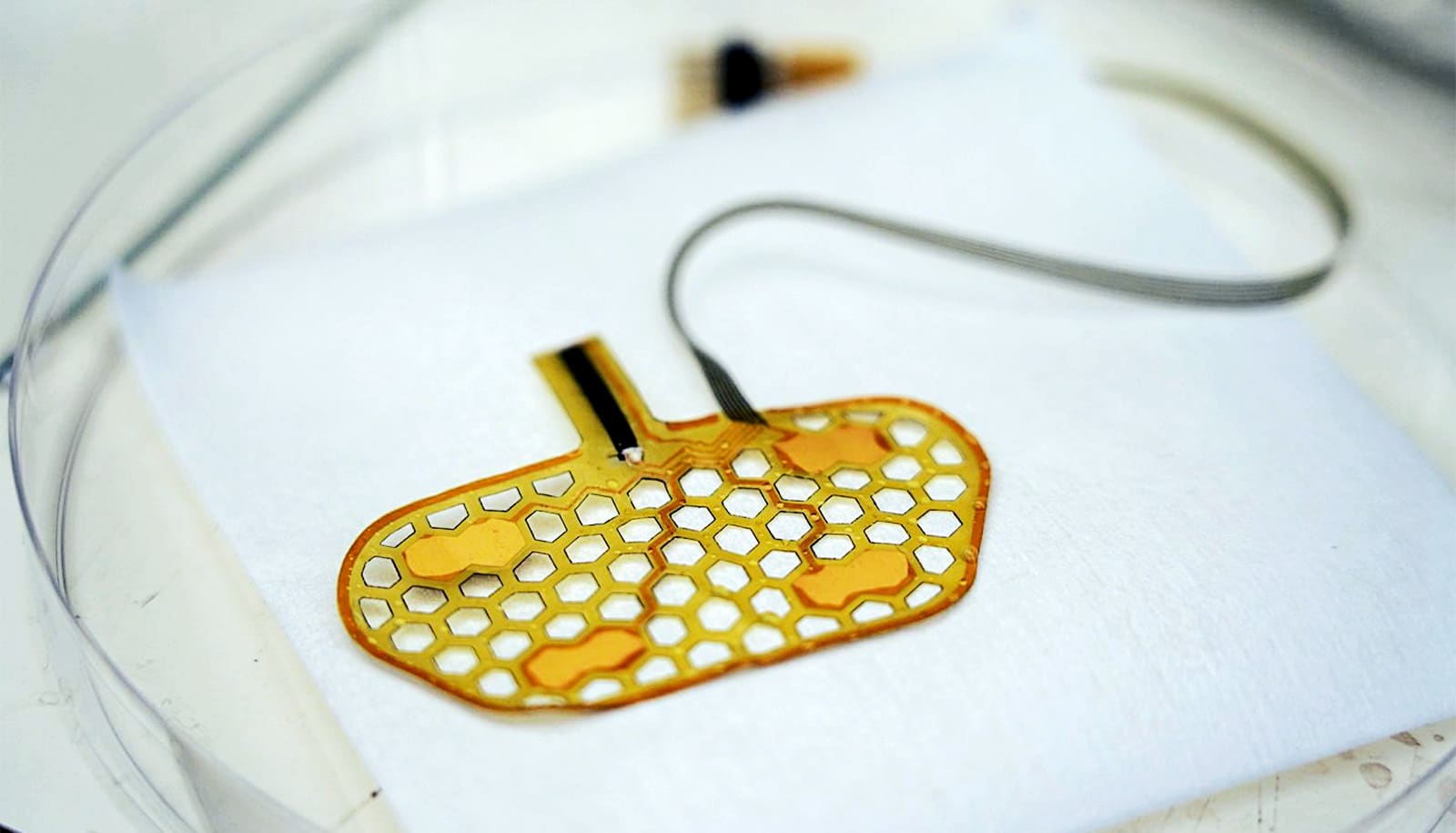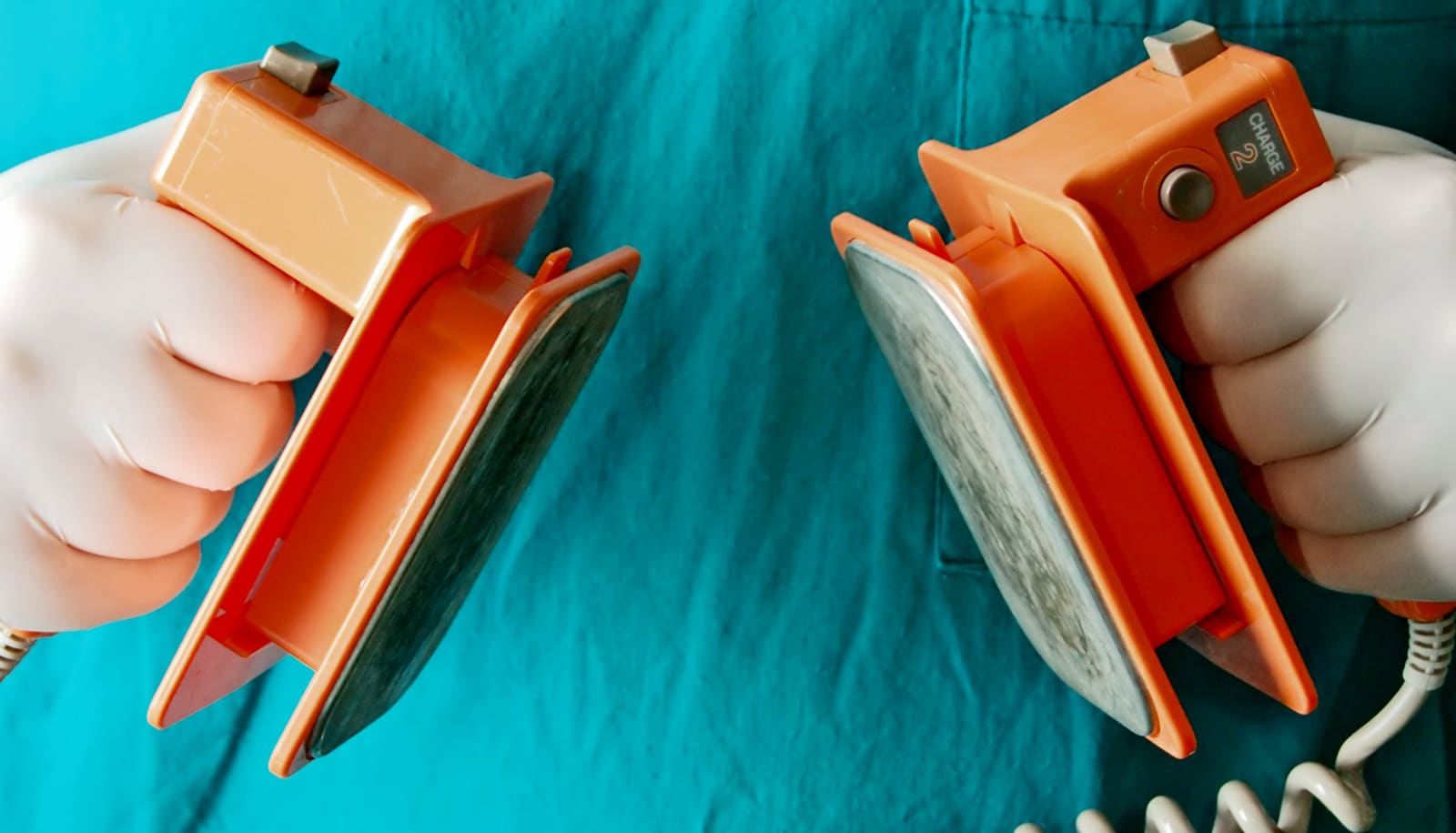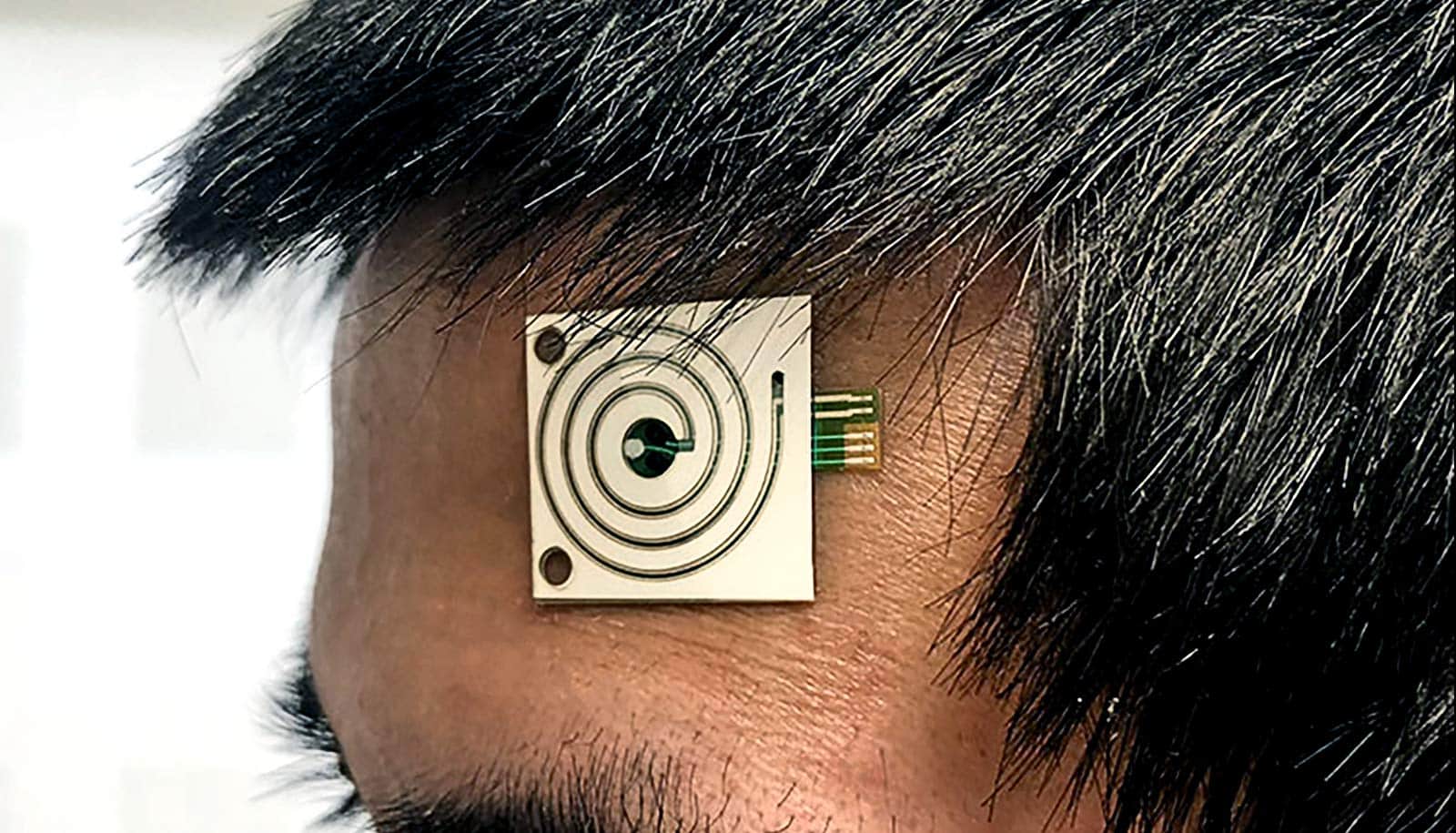A wearable monitoring device can make treatments easier and more affordable for the millions of people with swallowing disorders.
“We want to provide a reliable, patient-friendly and affordable way to treat the millions of people with swallowing disorders,” says Georgia A. Malandraki, an associate professor of speech, language, and hearing sciences in Purdue University’s College of Health and Human Sciences. “Many devices to help these people are expensive, not able to be taken home, and not accessible in many rural areas.”
Malandraki and Chi Hwan Lee, an assistant professor of biomedical engineering and mechanical engineering in the College of Engineering, created a skin-mountable sensor sticker that attaches firmly to the neck area and is connected with small cables to a wireless transmitter unit.
The skin-mountable sensor sticker measures and records muscle activity and movement associated with swallowing. A separate unit clipped on the wearer’s shirt then sends the information wirelessly to software that stores it for later analysis by a doctor.
Successful completion of a swallow requires the precise coordination of more than 30 pairs of muscles of the head and neck, six pairs of cranial nerves, and complex circuitry in the brainstem and several brain areas. Any disruption in these pathways can result in severe swallowing disorders.
More than 9 million adults and more than 500,000 children experience severe swallowing disorders each year in the US.
“Our device is unique in that we specifically created it to work well with the small and intricate muscles associated with swallowing events,” Lee says. “The sensor sticker is stretchable and flexible to work well with the skin and curvilinear head and neck shape, while the connected unit has electronic chips and more rigid components.”
The sensor stickers are disposable, designed with inexpensive components, and meant to be used about 10 times before the user throws them away.
The research appears in Science Advances.
Malandraki and Lee have completed pre-clinical tests of the device and are currently conducting clinical trials. They have founded Curasis LLC to commercialize the technology and are working with the Purdue Research Foundation Office of Technology Commercialization on patenting it. They also have worked with the Purdue Foundry, a commercialization hub in Purdue’s Burton D. Morgan Center for Entrepreneurship.
Source: Purdue University



